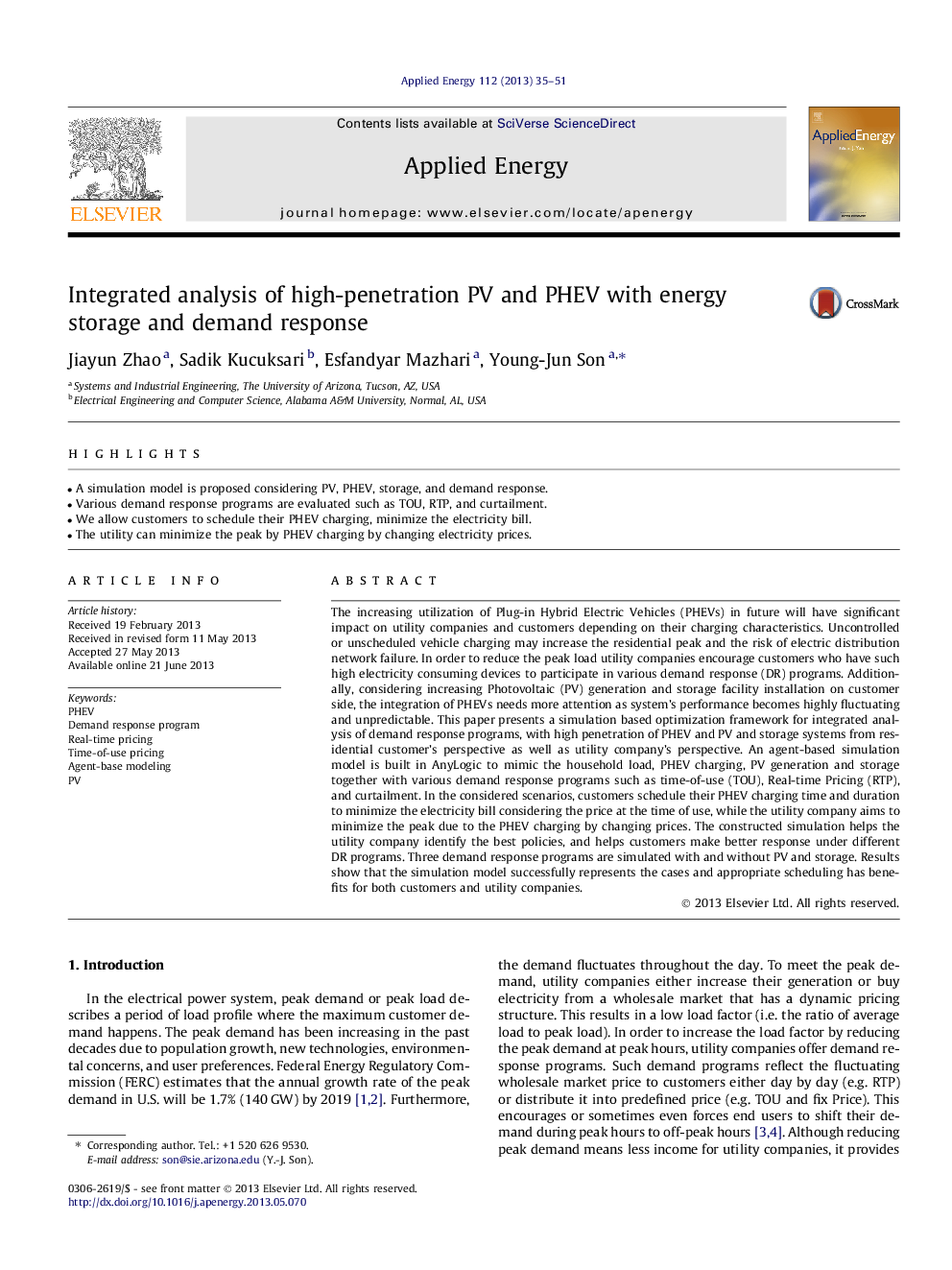| کد مقاله | کد نشریه | سال انتشار | مقاله انگلیسی | نسخه تمام متن |
|---|---|---|---|---|
| 242878 | 501913 | 2013 | 17 صفحه PDF | دانلود رایگان |

• A simulation model is proposed considering PV, PHEV, storage, and demand response.
• Various demand response programs are evaluated such as TOU, RTP, and curtailment.
• We allow customers to schedule their PHEV charging, minimize the electricity bill.
• The utility can minimize the peak by PHEV charging by changing electricity prices.
The increasing utilization of Plug-in Hybrid Electric Vehicles (PHEVs) in future will have significant impact on utility companies and customers depending on their charging characteristics. Uncontrolled or unscheduled vehicle charging may increase the residential peak and the risk of electric distribution network failure. In order to reduce the peak load utility companies encourage customers who have such high electricity consuming devices to participate in various demand response (DR) programs. Additionally, considering increasing Photovoltaic (PV) generation and storage facility installation on customer side, the integration of PHEVs needs more attention as system’s performance becomes highly fluctuating and unpredictable. This paper presents a simulation based optimization framework for integrated analysis of demand response programs, with high penetration of PHEV and PV and storage systems from residential customer’s perspective as well as utility company’s perspective. An agent-based simulation model is built in AnyLogic to mimic the household load, PHEV charging, PV generation and storage together with various demand response programs such as time-of-use (TOU), Real-time Pricing (RTP), and curtailment. In the considered scenarios, customers schedule their PHEV charging time and duration to minimize the electricity bill considering the price at the time of use, while the utility company aims to minimize the peak due to the PHEV charging by changing prices. The constructed simulation helps the utility company identify the best policies, and helps customers make better response under different DR programs. Three demand response programs are simulated with and without PV and storage. Results show that the simulation model successfully represents the cases and appropriate scheduling has benefits for both customers and utility companies.
Journal: Applied Energy - Volume 112, December 2013, Pages 35–51